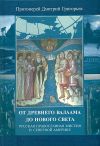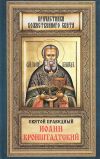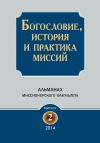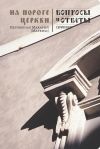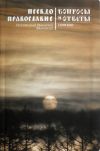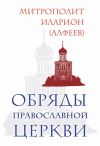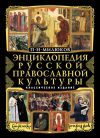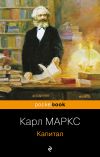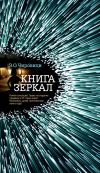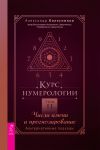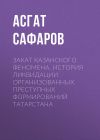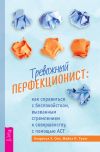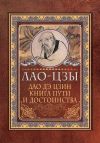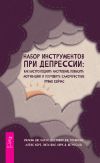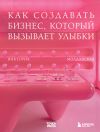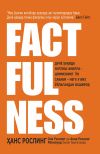Текст книги "Православная миссия в Таиланде в 1999-2014 гг."

Автор книги: Михаил Чепель
Жанр: Культурология, Наука и Образование
сообщить о неприемлемом содержимом
Текущая страница: 2 (всего у книги 7 страниц) [доступный отрывок для чтения: 2 страниц]
Общая сумма составила более миллиона долларов, но я думаю, что по заступлению и молитвенной помощи святителя Николая, к которому мы обращаемся в наших молитвах, необходимая сумма была собрана в течение четырех месяцев. 1 января мы начали сбор средств в Бангкоке, а уже в мае месяце мы приобрели землю за 600 тысяч долларов. Сегодня строительство храма уже началось, и 20 декабря мы, воспользовавшись уникальной возможностью нахождения в Таиланде ковчега с мощами святителя Николая Чудотворца, в присутствии его честных мощей совершили закладку нового храма во имя этого святого. Мы получили благословение Святейшего Патриарха Московского и всея Руси Кирилла, который призвал Божие благословение на эти труды и поблагодарил паству за такое рвение о Господе».12
12 Православие по-тайски: Бангкок, Пхукет, Самуи, далее везде. Интервью с представителем Русской Православной Церкви в Таиланде архимандритом Олегом (Черепаниным) // pravoslavie.ru, 28 декабря 2012 (дата обращения 24.07.2014 года).
К 2014 году строительство нового храма было завершено. 16 февраля 2014 г. в городе Бангкоке состоялся чин Великого Освящения Свято-Никольского собора, самого большого православного храма в Таиланде. Праздничное богослужение возглавил архиепископ Егорьевский Марк, руководитель Управления Московской Патриархии по зарубежным учреждениям. В богослужении приняли участие представитель Русской Православной Церкви в Таиланде и настоятель храма архимандрит Олег (Черепанин), клирики Русской Православной Церкви, прихожане и представители православной общины Бангкока и других районов страны. В день освящения в соборе был установлен ковчег с частицей мощей Святителя Николая Чудотворца, архиепископа Мирликийского, привезенный Благотворительным Фондом Святителя Николая Чудотворца из Москвы специально к этой дате.
Накануне, 15 февраля, в праздник Сретения Господа Бога и Спаса нашего Иисуса Христа, архиепископ Егорьевский Марк совершил чин великого освящения Покровского храма в Паттайе и возглавил Божественную литургию в новоосвященном храме.
Покровский храм расположен в коттеджном пригороде г. Паттайи, среди жителей которого преобладают выходцы из стран Православия. Здесь образовалась небольшая, но сплоченная православная община и открытие храма как нельзя лучше отвечает ее духовным потребностям. Я был назначен настоятелем этого храма.13
13 Освящение православных храмов в Бангкоке и Паттайе rusthai.n4.biz›news/-/news…news…храмов…Бангкоке (дата обращения 25.07.2014 года).
Строительство каждого из православных храмов на Таиланде имело свою специфику. Так идея строительства Вознесенского храма на острове Самуи возникла среди русскоязычных, проживающих в тех местах уже долгое время. В январе 2011 года Комитетом Фонда Православной Церкви в Таиланде было принято решение о строительстве. 13 июня 2013 года, в празд-ник Вознесения Господня состоялось малое освящение и открытие храма. При храме открыты воскресная школа в честь преподобного Сергия Радонежского, формируется библиотека. Как отмечал архимандрит Олег (Черепанин) «самуйский храм возник благодаря волевому решению, желанию одного человека, которому принадлежит, может быть 80 процентов пожертвований на покупку земли и строительство. Который отнюдь не бизнесмен, высокого уровня менеджер, и это для него значительные затраты, но вера которого такова, что поскольку он бывает на Самуи достаточно часто, несколько раз в году, хотел, чтобы там был храм. <…> И когда уже появились стены, появились купола, народ, видя, что строится храм, стал откликаться более оперативно. <…> Но вот этому человеку, который свою волю проявил и меня к этому подвигнул, мы очень благодарны».14
14 Вознесенский храм о. Самуи // Таиланд Православный. 2013. Ноябрь.
Анализируя ситуацию по православным храмам в Таиланде, архимандрит Олег сделал следующий вывод: «Все храмы располагаются там, где в основном проживает или отдыхает большое количество наших сограждан и граждан СНГ. В основном, это курортные места. Бангкок – понятно, это столица, здесь много представительств – дипломатических, торговых. Паттайя, Пхукет, Самуи – крупнейшие курорты. Хуахин – также известный курорт, где в последние годы наблюдается увеличение русского присутствия. Соотечественники здесь часто приобретают недвижимость. В Хуахине уже есть русский ресторан, сложилась своя диаспора. И, конечно же, возникла необходимость и в православном храме. Должен сказать, что все наши храмы на самообеспечении, они все востребованы и, скажем так, рентабельны. Говорить о численности паствы в Таиланде сложно, поскольку православные храмы здесь посещаются как теми соотечественниками, кто постоянно проживает в Таиланде, так и туристами. Наши храмы посещают и местные жители».15
15 Архимандрит Олег (Черепанин): «Наша принципиальная позиция – не оказывать никакого давления и насилия при обращении тайцев» // patriarchia.ru, 7 августа 2013 (дата обращения 24.07.2014 года).
Идея необходимости создания православного монастыря возникла из осознания необходимости иметь в Таиланде православное кладбище. Как говорил в интервью в 2011 году архимандрит Олег (Черепанин) «Совсем недавно нам удалось приобрести землю в провинции Ратчабури, чтобы устроить там православное кладбище – ведь, как известно, в Таиланде тела умерших не хоронят, а сжигают. Кремируют здесь в буддийских монастырях, и, хотя местные монахи говорят, что не исполняют никаких обрядов, такого не может быть по определению – ведь кремируют в культовом заведении по определенному порядку. Поэтому у нас остро стоит вопрос, что же будет с нами после смерти, и я имею в виду не только душу, но и тело: родственникам, чтобы переправить тело на родину и похоронить по-христиански, приходится платить 6-7 тысяч долларов. И я призываю туристов, которые, как правило, приезжают в Таиланд заниматься разными экстремальными вещами, помнить об этом».16
16 Сложно ли молиться в тропическом раю? Беседа о тайской православной миссии с архимандритом Олегом Черепаниным //pravoslavie.ru, 19 июля 2011 (дата обращения 24.07.2014 года).
И далее отец Олег рассказывал, что «мы обратились к Патриарху Московскому и всея Руси Кириллу с прошением организовать там, в Ратчабури, монашескую обитель, ведь это очень консервативный буддийский регион, и, чтобы в том месте обустроить кладбище и православный храм, нужно находиться там постоянно. Патриарх эту идею благословил. В настоящее время монастырский комплекс освящен, он включает в себя церковь в честь Успения Божией Матери, часовню в честь Иверской иконы Божией Матери, игуменские покои, монастырские кельи, другие хозяйственные постройки».17 О первых насельниках архимандрит говорил, что «среди послушников: серб, американец и лаосец. Им всем дан дисциплинарный устав, и они очень четко его выполняют. Конечно, среди насельников должен быть – и нам очень хотелось бы, чтобы был, – и опытный монах, поскольку пребывание в монастыре подразумевает духовное возрастание под присмотром опытного старца. Пока о старцах нам говорить не приходится, но очевидно, что нужен человек, имеющий опыт организации жизни в обители».18
17 Там же.
18 Там же.
Как духовник Представительства я осуществлял руководство и этой обителью, совершал в ней богослужения. Поэтому соглашусь с архимандритом Олегом, который на вопрос «Мы привыкли, что монастыри, как правило, устраивают в местности, отличающейся суровым климатом, например на севере или в безводной пустыне. А сложно ли молиться в тропиках, где климат похож на райский?» ответил: «Да там у нас, в новом монастыре, и есть настоящий рай! У нас дикие цапли живут, и обезьяны приходят с гор; практически домашняя кобра ползает постоянно… А условия для жизни создать не трудно – есть удобные новопостроенные кельи… Приходи и молись! А если без иронии – то, когда человек настроен жить с Богом, ему все рав-но, где он живет: в пустыне или во граде. Я убежден, что не стоит уделять внимание каким-то внешним факторам – этому научила меня жизнь на Востоке. Может быть, это важно для новоначальных, но человеку, который уже сознательно идет по этому пути, надо строить пустыню внутри себя».19
19 Там же.
Среди просветительских проектов, реализуемых Представительством, можно отметить выпуск газеты «Таиланд Православный». Как одно из свидетельств признания полезности этого издания можно отметить то, что в 2014 году оно выиграло грант, предоставляемый благотворительным фондом «Русский Мир». Грант, в размере 200,000 таиландских бат позволит профинансировать выпуск газеты в течение года. Редакция газеты «Таиланд Православный» располагается при Вознесенском храме на о. Самуи (провинция Сураттхани) и издается по благословению Представителя Русской Православной Церкви в Таиланде архимандрита Олега (Черепанина). Главный редактор – иерей Алексей Головин. Газета выходит периодичностью один раз в три месяца при тираже 1000 экз. и распространяется по православным храмам в Таиланде.20
20 Газета «Таиланд Православный» выиграла грант фонда «Русский Мир» www.orthodox.or.th/index.php?content=news (дата обращения 24.07.2014 года).
Как отмечалось в отчете о деятельности Православной Церкви в Таиланде за 2012 год, «Представительство осуществляет контрольно-административное наблюдение и духовное попечение за православными приходами на территории Королевства Таиланд, Королевства Камбоджи и Лаосской Народно-Демократической Республики, входящих в юрисдикцию Московского Патриархата и определяет общую концепцию развития Православия в этих странах на основании инструкций и указаний Священноначалия Русской Православной Церкви. Представительство Русской Православной Церкви в Королевстве Таиланд расположено на базе Свято-Николаевского прихода в г. Бангкок. Там же расположен и головной офис Фонда Православной Церкви в Таиланде, осуществляющего финансирование стратегических задач по развитию Православия и других общецерковных нужд в странах, входящих в зону пастырской ответственности Представительства. В настоящее время на территории региона, подлежащего пастырской ответственности Представительства Русской Православной Церкви в Таиланде, действуют 7 православных приходов в юрисдикции Московского Патриархата, из которых 5 находятся на территории Таиланда и 2 – на территории Камбоджи, а также Успенский мужской монастырь в провинции Ратчабури, статус которого требует рассмотрения вопроса Священным Синодом Русской Православной Церкви. При Успенском монастыре располагается православное кладбище.21
21 Отчет о деятельности Православной Церкви в Таиланде за 2012 год (в сокращении) http://www.orthodox.or.th/index.php?content=documents&lang=ru (дата обращения 03.08.2014 года).
Анализируя пройденный Представительством за неполные 15 лет его истории путь становления, можно сделать вывод, что Русская Православная Церковь закрепилась на территории Королевства Таиланд, получила государственное и общественное признание, создала свою инфраструктуру, начала активную просветительскую деятельность, распространяя свою миссию, как на русскоязычных жителей страны, так и на тайцев.

Страница из газеты «Таиланд Православный» с изображением географии и фотографий православных храмов Королевства Таиланд.
Page from the newspaper «Orthodox Thailand» with the image of geography and photos of the Orthodox churches of the Kingdom of Thailand.
Chapter 1. The formation and development of the mission of the Russian Orthodox Church in Thailand in recent times
§ 1. The formation and structuring of Representation of the Russian Orthodox Church, in the Kingdom of Thailand, from 1999-2014.
The establishment of the Representation of the Russian Orthodox Church in Thailand was connected with many difficulties, one of which was the problem of the legal registration of the status of the Representation.
The Archimandrite Oleg (Cherepanin ) noted that there were many legal challenges. During the cold war, Thailand entered the zone of influence of the United States, and the attitude to Russia remained wary after the collapse of the USSR for a long time. If, in the early 20th century Siam (so Thailand was called) saw in the Russian Empire a friendly power, and patron, that contact between the two states was unfortunately interrupted after the revolutionary events of 1917. Although the diplomatic relations did resume in 1946, they were not able to fill fully the gap that formed between the USSR atheistic perception of reality, and the Thai worldview, in which the King was the patron of all religions, and all propaganda of the ideology of communism and atheism was a punishable crime.1
1 Oleg (Cherepanin), the Abbot. The mentioned work, p 166, 164.
Historically, Orthodoxy was not represented in the territory of the Kingdom of Thailand, which make it a rather difficult problem for Orthodox missionaries. In this regard, the formation in Bangkok of an Orthodox community and the emergence of a foreign priest were met with suspicion. Even from the legal point of view, the legislation of Thailand on religion has not considered Orthodoxy as a distinctive direction in Christianity.2
2 Oleg (Cherepanin), the Abbot. The mentioned work, p 166.
On the 29th of February 2000 the Ministry of foreign Affairs of the Kingdom stated in response to a request from the Embassy of the Russian Federation that “the Regulation of Religious Organizations of 1969 and the Article 4(b) of the Regulation of Religious Organizations 1982 regulate that for registration of the Representation of the Church in Thailand it is necessary that this Church has not less than five thousand people registered in the census as the Thais, as well as the Roman Catholic Church and the Protestant Church in Thailand have given their consent to the opening a Representation of this Church”.3 On the 27th of March, 2000 his Holiness, the Patriarch of Moscow and all Russia Alexiy II sent a letter to the King of Thailand Phumipong. In the appeal it was said: “We know that Your Majesty is the patron of all believers in the Kingdom of Thailand, and we hope that Your care and concern will also extend to the Russian Orthodox parish. In this regard, we appeal to You for support in case of state registration of our parish as the Representation of the Russian Orthodox Church in Thailand”.4
3 The archive of the Representation of the Russian Orthodox Church in the Kingdom Thailand. A copy of the letter of the Ministry of foreign Affairs of Thailand on the 29th of February 2000.
4 The archive of the Representation of the Russian Orthodox Church in the Kingdom Thailand. A letter of Patriarch Alexy II to the King of Thailand.
For assistance in resolving this issue, the Patriarch Alexiy appealed to the Supreme Buddhist Patriarch of Thailand Somdet Great Nyanasamvara (Suvadhana Mahathera). In the letter was noted: “The Buddhist temple for the crown Prince of Siam was built in the beginning of the last century in the capital of the Russian Empire St. Petersburg, and today, Buddhism is one of the traditional religions of Russia. The fruitful cooperation of the Russian Orthodox Church and Buddhists in many interfaith forums helps believers of different faiths to participate actively in the solution of many humanitarian issues facing modernity. <…> we also refer to your spiritual authority and hope you will support the registration of our parish in Bangkok”.5
5 The archive of the Representation of the Russian Orthodox Church in the Kingdom Thailand. The letter of Patriarch Alexy II to the Supreme Buddhist Patriarch of Thailand.
Another difficulty in the operation of the Representation were relations with the Patriarchate of Constantinople, founded in 1996 under the Hong Kong diocese, in the jurisdiction of which Thailand was. The director of this diocese the Metropolitan Nikitas with the support of the Greek and American diplomatic corps, tried to imagine the Patriarch of Constantinople as an analogous to the Pope of Rome for the Orthodox world in his contacts with the relevant authorities. In this regard, in the first stage, it was offered to the Orthodox parish of the Russian Orthodox Church to recognize the jurisdiction of the Hong Kong bishop for legalization.6
6 Oleg (Cherepanin), the Abbot, the mentioned work. p. 166-168.
It was possible only with time to explain the features of the canonical system of the Orthodox Church to the authorities of the Kingdom Thailand. One decisive role was played during the visit of Thailand by the Chairman of the Department for external Church relations of the Moscow Patriarchate, the Metropolitan of Smolensk and Kaliningrad Kirill. However, after this visit of the Metropolitan Kirill, the concept of autocephaly demanded explanations for the officials of the Kingdom. The head of the Buddhist traditional Singha of Russia Pandito Hambo Lama Damba Ajusheev wrote in his letter to the King of Thailand on February 25, 2002: “The laws of the Kingdom of Thailand provide in Christianity only two branches – the Roman Catholic and Protestant, which are registered by the authorities of the Kingdom, and 5000 followers of the local population are required from all new religious groups. However, the world Christianity is historically divided into three branches, Orthodoxy is the oldest. And the internal laws of the Orthodox Church do not allow its followers to obtain the registration from the civil authorities under the auspices of any other Christian Church.
All this leads to the fact that the law of Thailand about religions that helps the legalization of various Protestant denominations, hinders the registration of the Orthodox Church exceedingly. Another feature of the Orthodox Church is that Orthodoxy in the modern world is divided into 15 Autocephalous (self-governing) of the Orthodox Churches and the Russian is the largest. In addition, as independent countries cannot represent the interests of each other, the self-governing Autocephalous Churches, having the General rules of faith, cannot, however, be represented by one another. The lack of the state registration of the Russian Orthodox Church in Thailand as the Representation creates a lot of difficulties, ranging from the provision of certain visas for the priest and construction of the Church to the impossibility of buying a car and opening a Bank account”.7
7 The archive of the Representation of the Russian Orthodox Church in the Kingdom of Thailand. A copy of the letter of the head of the Buddhist traditional Singha of Russia to the King of Thailand.
However, in spite of all difficulties, Orthodoxy in Thailand began to strengthen. The Archimandrite Oleg (Cherepanin) noted in an interview in 2009: “The question has moved from a dead point only after the official visit in 2001 in Bangkok of Metropolitan Kirill and his meeting with the Chairman of the Privy Council of the King, with the guidance of the Department for religious Affairs of the Ministry of education, with a number of other senior officials, after reviewing of the Thai authorities with the real situation, what the Orthodox Church is.
I consider myself to be a hardy man. But I believe even I was exhausted from the pace and quantity of the activities of the current visit of his Holiness Patriarch in Thailand. It is unlikely for the entire period of his visit, that he and we, of course, slept more than five hours a day. The Bishop had only three days. Three days of hard work marked the beginning of public recognition of the Orthodox Church in Thailand. The Russian Ambassador Mr. Ostrovenko exclaimed with amazement to the Bishop at parting: “But this is the recognition of the Orthodox Church”. And it was so. His Holiness the Patriarch Kirill of Moscow and all Russia is for the Orthodox flock in Thailand not just the head of the Russian Orthodox Church, but also the wise Archbishop or a great preacher. Here he is honored above it. He is the Apostle of Thailand. There is no coincidence that all our Thai people, especially those who met him, carry his picture with themselves”.8
8 About the Orthodox life in Thailand, Laos and Cambodia. The Interview with the representative of the Russian Orthodox Church in Thailand the Abbot Oleg (Cherepanin) // pravoslavie.ru, the 16th of February, 2009. (date of access: 24.07.2014).
Despite in the absence of the state registration, the Thai authorities have informed through the foreign Ministry of the Kingdom the Embassy of Russia, that although the official registration will be in the future, the Orthodox community is allowed to carry out their religious activities on the basis of the Constitution of the country guaranteeing freedom of religions.”9
9 Oleg (Cherepanin), the Abbot, the mentioned work, p.172.
The result of visiting Thailand by the Metropolitan Kyrill of Smolensk and Kaliningrad was that the Holy Synod`s decision of the 27th of December 2001 was the following: “To reform the St. Nicholas parish of the Russian Orthodox Church in Bangkok into the Representation of the Russian Orthodox Church in the Kingdom of Thailand. To appoint the rector of the St. Nicholas parish of the Russian Orthodox Church in Bangkok the Abbot Oleg ( Cherepanin) as the representative of the Russian Orthodox Church in the Kingdom of Thailand”.10
10 The archive of the Representation of the Russian Orthodox Church in the Kingdom Thailand. The decision of the Holy Synod of the Russian Orthodox Church (the Moscow Patriarchate) about the opening of a Representation of the Russian Orthodox Church in Thailand.
The initial period of the formation of the Representation is connected with its support of Samanchit Thamavit, the owner of considerable real estate in the most prestigious area of Bangkok located in close proximity to the residence of the King. Significant restrictions are imposed on private property for foreigners in Thailand; provision by Samanid Thamavit to St. Nicholas parish land, on which two residential buildings were located, allowed initially to place in one of them the Church of St. Nicholas the Wonderworker.11
11 Oleg (Cherepanin), the Abbot, the mentioned work, p.170-171.
Over time, the fact that the temple is located in a rented room has brought some problems. The Archimandrite Oleg (Cherepanin) noted in 2012: “Bangkok is the first place where the preaching of Orthodoxy began and our Church started to grow. Fourteen years ago the St. Nicholas parish was founded, which was located in a rented building, because we hadn`t the state registration and had to use the right of private property, renting premises by local citizens. And when we began to build temples in Pattaya, Phuket, Samui, the donor of these constructions was the Bangkok parish of St. Nicholas the Wonderworker. It so happened that “the shoemaker is without shoes” – today we have temples in Pattaya, Phuket and in other places of Thailand, but Bangkok is still a very small rented place. It does not correspond to the status of our Church in the country and the demands of the community, because it has increased in recent years. In addition, due to illness of the owner of the property, the rights of our leased premises passed to her niece. But she was not so scrupulous in respect of the leased agreements, as her aunt and the rent for the house began to rise sharply and often enough. Therefore, despite in the fact that we have not finished the construction of temples on Samui and Pattaya, it was decided to begin the construction of the temple in Bangkok and to buy the land.
The total sum amounted more than a million dollars, but I think that thanks to the intercession and prayer by Saint Nicholas, to whom we turn in our prayers, the required amount has been collected for four months. On the first of January we began fundraising in Bangkok, and in May, we purchased the land for 600 thousand dollars. Today the construction of the temple has already begun, and on the 20th of December we, using the unique opportunity of staying in Thailand ark with the relics of St. Nicholas the Wonderworker, made in the presence of his venerable relics the foundation of a new temple in the name of the Saint.
We received the blessing of his Holiness the Patriarch of Moscow and all Russia Kirill, who called down God’s blessing on this work and thanked the congregation for the zeal for the Lord”.12
12 Orthodoxy in Thailand: Bangkok, Phuket, Samui and then everywhere. The interview with the representative of the Russian Orthodox Church in Thailand Archimandrite Oleg (Cherepanin) // pravoslavie.ru, the 28th of December 2012 (date of access: 24.07.2014).
The construction of the new temple was completed by 2014, and on the 16th of February, the Consecration of St. Nicholas Cathedral took place in Bangkok – now the largest Orthodox Church in Thailand. The festive divine service was celebrated by the Archbishop Mark of Yegorievsk, the head of the Administration of the Moscow Patriarchate for foreign institutions. The service was attended by the representative of the Russian Orthodox Church in Thailand and the rector the Archimandrite Oleg (Cherepanin), the clerics of the Russian Orthodox Church, the parishioners and the members of the Orthodox community in Bangkok and other parts of the country.
On the day of the consecration of the Cathedral, inside the Cathedral, erected was the Shrine of the relics of St. Nicholas the Wonderworker, the Archbishop of Myra, brought by the Charitable Fund of the Saint Nicholas the Wonderworker, the Archbishop of Myra, brought by the Charitable Fund of the Saint Nicholas the Wonderworker from Moscow specially for this festive occasion.
On the eve of the 15th of February during the feast of the presentation of our Lord God and Savior Jesus Christ, the Archbishop Mark of Yegorievsk had performed the consecration of the Pokrovsky Church in Pattaya, and celebrated the divine Liturgy at the newly consecrated Church.
The Pokrovsky temple is located in a cottage suburb of Pattaya, and among its inhabitants are immigrants from countries where Orthodoxy is dominated. The opening of the temple in this small, but closely-knit Orthodox community, suited its spiritual needs best of all. I was appointed as a rector of this temple.13
13 The consecration of the Orthodox temples in Bangkok and Pattaya // rusthai.n4.biz.>news/-/news. (date of access: 25.07.2014).
The construction of each of the Orthodox churches in Thailand had its own specific needs to be met. So the idea of building the Ascension temple on the island of Samui had arisen among Russian-speaking people, from living in those places for a long time. In January 2011 the Committee of the Fund of the Orthodox Church in Thailand came to a decision to begin the construction. The blessing and the opening of the temple took place on the 13th of June 2013 at the feast of the Ascension. A Sunday school was opened by the temple in honor of St. Sergiy of Radonezh and a library was formed.
The Archimandrite Oleg (Cherepanin) noted: “The Samui temple was built because of the strong-willed decision, the desire of one person who owns maybe 80 percent of the funds for the purchase of land and the construction. He is not a businessman, but a top manager, and these were significant disbursements for him, but his faith was so that, because he visits Samui quite often, several times a year, he wanted the temple to be there. <…> when the walls and domes have already appeared, the people began to respond more quickly, seeing that construction <…> But we are very grateful to this man who showed his will and inspired me to this”.14
14 The Ascension Cathedral, isl. Samui // Orthodox Thailand. 2013. November.
Analyzing the situation in the Orthodox temples in Thailand the Archimandrite Oleg made the following conclusion: “All temples are located there where mainly a large number of our citizens and citizens of the CIS live or rest. Basically, these are the resort areas. Bangkok, clearly, is the capital, there are a lot of missions here – the diplomatic, the trade missions. Pattaya, Phuket, Samui are the largest resorts. Huahin is also a famous resort, where one can note in recent years the increase of the Russian presence. Compatriots often acquire real estate here.
In Huahin there is already a Russian restaurant and its own Diaspora. And of course there is a need in the Orthodox Church. I must say that all our churches are selfsufficient, they are all demanded and profitable. To talk about the number of congregations in Thailand is difficult because the Orthodox churches here are visited here both by those compatriots who reside in Thailand and tourists. Our churches are also visited by the locals”.15
15 The Archimandrite Oleg (Cherepanin): “Our fundamental position is not to put any pressure and violence upon Thais” // patriarchia.ru, August, 7, 2013 (date of access: 24.07.2014).
The idea of necessity to create an Orthodox monastery arose from recognition of the need to have in Thailand an Orthodox cemetery. The Archimandrite Oleg (Cherepanin ) reported in an interview in 2011: “Recently we were able to purchase land in the province of Ratchaburi to stage the Orthodox cemetery – because, as you know, in Thailand, the bodies of dead people are not buried but burned. The cremation is carried out in the Buddhist monasteries here, although the local monks say they do not perform any rites, it could not be so because there is a particular order of cremation in religious institutions. Therefore, the question what will happen to us after death, is very important and I mean not only the soul but also the body: To bring the body to the home-land and to be buried as a Christian, the relatives have to pay 6-7 thousand dollars. And I urge upon tourists, who usually come to Thailand to do some extreme things, to remember about this”.16
16 Is it difficult to pray in a tropical Paradise? The talk about the Thai Orthodox mission with the Archimandrite Oleg Cherepanin. // pravoslavie.ru, July 19, 2011 (date of access: 24.07.2014).
And because this is a very conservative Buddhist region, the father Oleg told that “we appealed to the Patriarch of Moscow and all Russia Kirill with a petition to organize in Ratchaburi the monastery, and to build a cemetery and an Orthodox Church in that place, you need to be there constantly. The Patriarch blessed this idea. At the present time the monastery was consecrated, it includes a Church in honor of the Assumption of the Mother of God, a chapel in honor of the Iberian icon of the Mother of God, an Abbot`s chamber, monastic cells, other outbuildings”.17
Внимание! Это не конец книги.
Если начало книги вам понравилось, то полную версию можно приобрести у нашего партнёра - распространителя легального контента. Поддержите автора!Правообладателям!
Данное произведение размещено по согласованию с ООО "ЛитРес" (20% исходного текста). Если размещение книги нарушает чьи-либо права, то сообщите об этом.Читателям!
Оплатили, но не знаете что делать дальше?